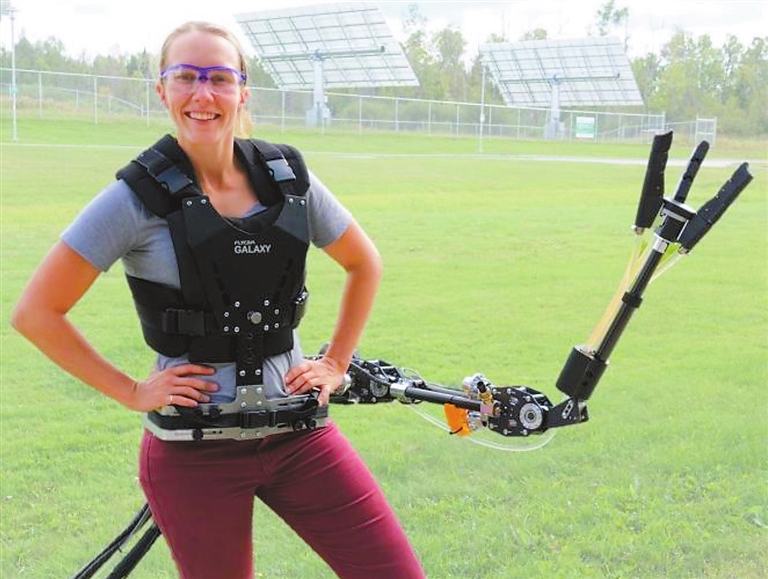
Researchers at the University of Sherbrooke in Canada has designed a hydraulic arm that sits on the wearer’s hip and uses a three-fingered manipulator to carry out a range of tasks. The arm has three degrees of freedom, can move at a speed of 3.4 meters per second, and can lift 5 kilograms in weight. It’s pretty light and weighs just 4 kilograms, roughly the same as a human arm. But that’s primarily because it uses a hefty external power source that’s attached via a short tether, limiting mobility. There’s a huge range of tasks a robot like this could be put to in the future. It could mimic the wearer’s movements, speeding up jobs like picking fruit or painting. Or it could act as an assistant, holding items in a workshop or passing tools. Or it could just punch through walls — in case you have anger issues and fragile fists. An external power source does introduce some constraints, but that might not be too awkward if the wearer is working in one place (as is likely in a workshop) or if the power source can be moved about on wheels, perhaps even following the wearer autonomously. The technology isn’t ready to be dropped into factories or workshops, with control perhaps the biggest limiting factor. As the demo video shows, right now, the arm is manipulated by a third party. Creating a robotic limb that’s smart enough to be useful without human instruction is a very difficult task that’s likely a long way off still. But what research projects like this can do is help engineers work out other potential issues, like how do you compensate for inertia created by a robot arm when it performs fast or powerful movements? As you can see in the wall-smashing section of the video, this can potentially throw the wearer off balance. The solution here was to place the arm next to the wearer’s center of mass and secure the setup with a rigid harness, though the experience still looks a little wobbly to us. (SD-Agencies) | 
